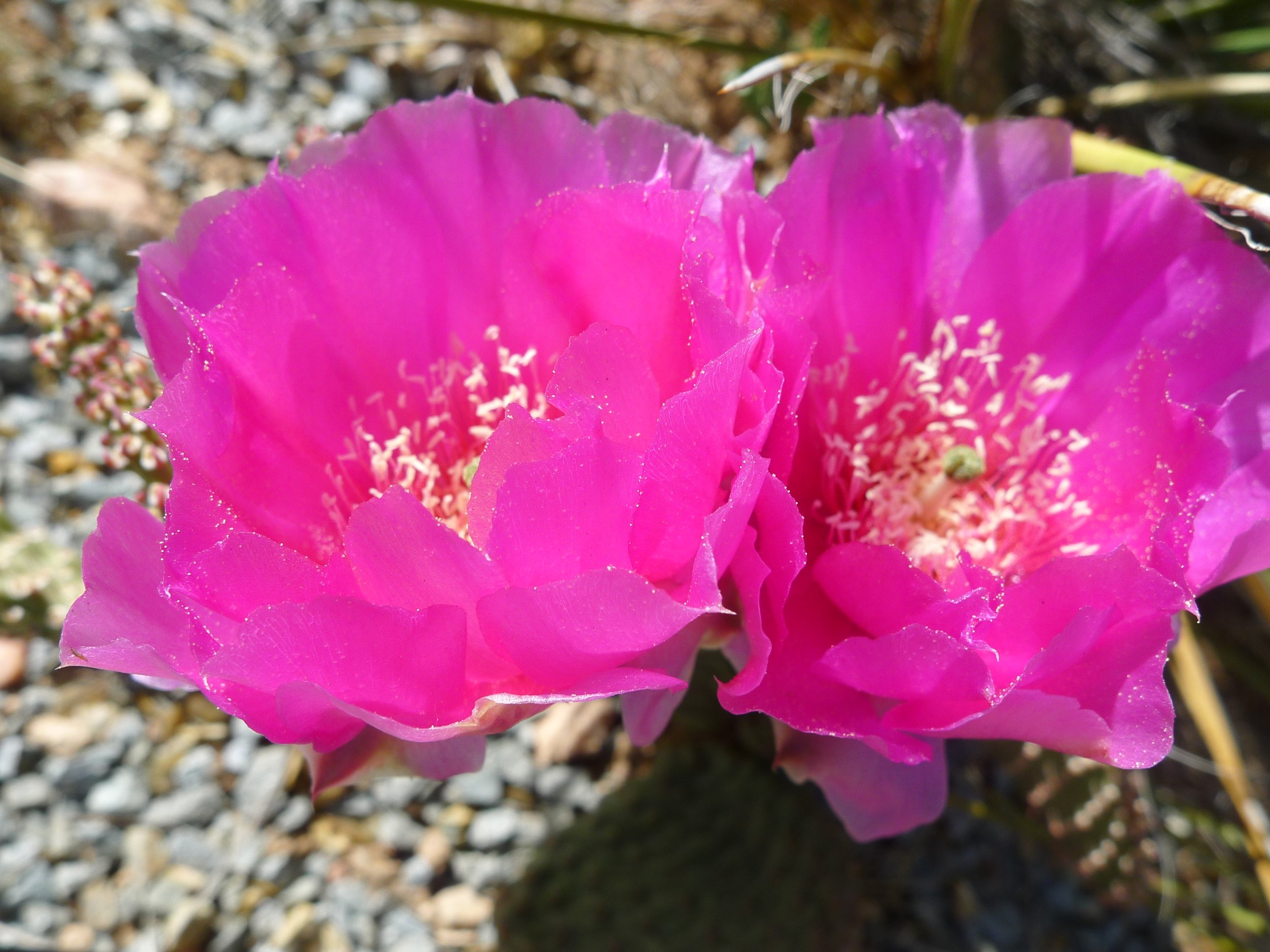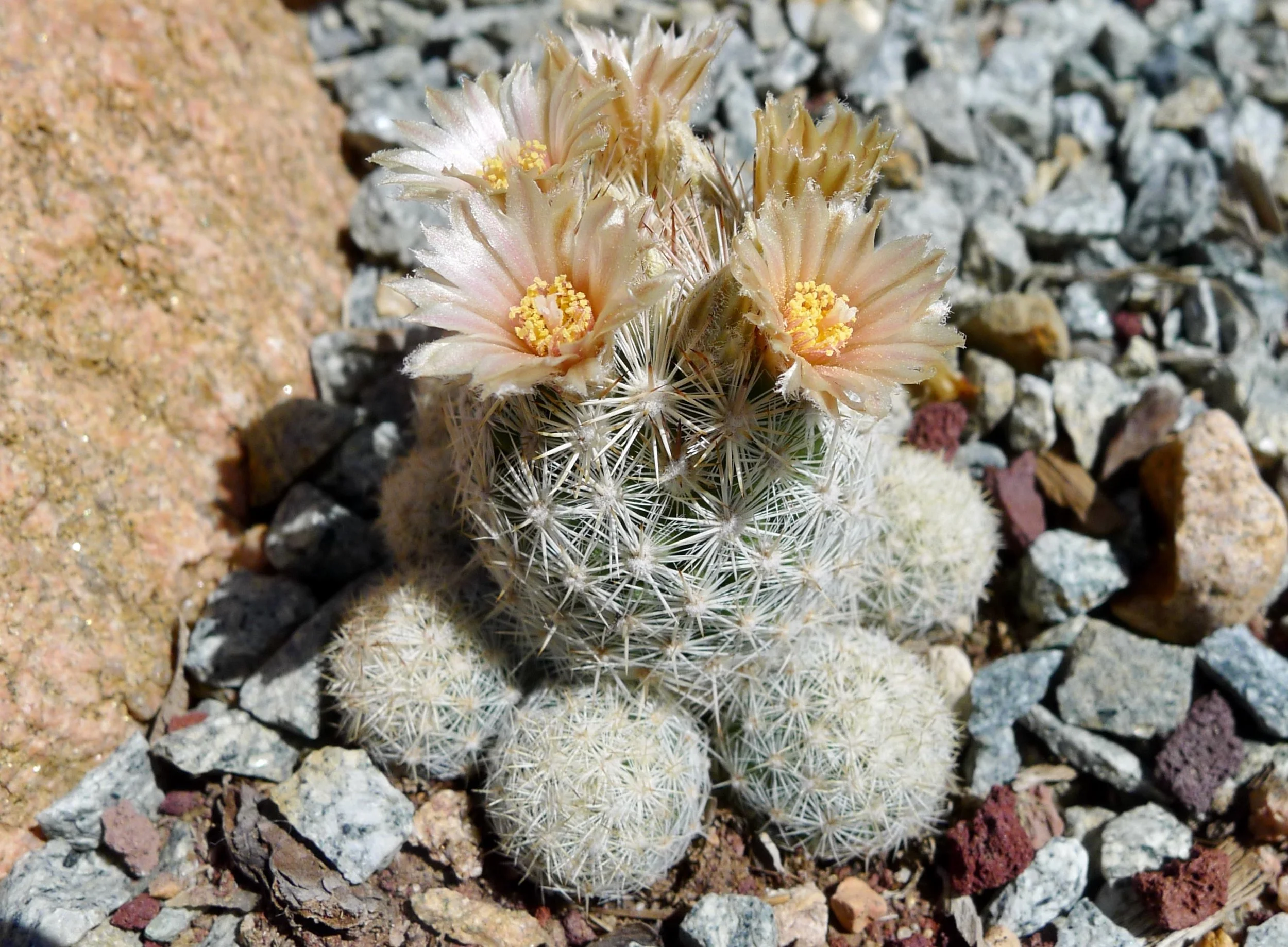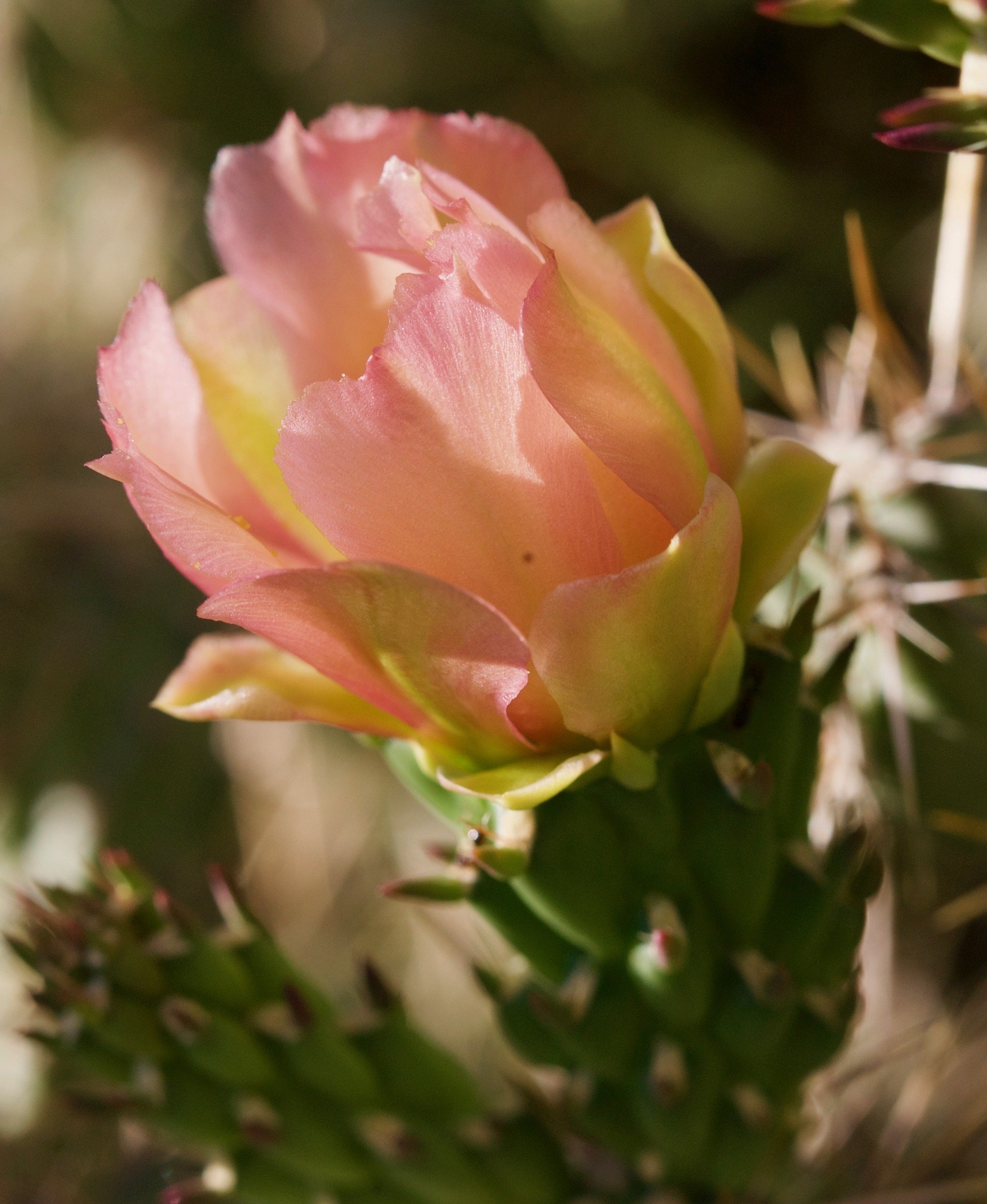The SFEMG Cactus Garden
Story by Cactus Garden Project Leader Cullen Hallmark
Photos courtesy Pam Wolfe
In 2012, the Santa Fe Master Gardener Association, a predecessor to the SFEMG, began work on a new demonstration project: the Cactus Garden. With the help of many volunteers, Project Leader Jill Foster designed and built a compact garden at the west end of the larger parking lot at 3229 Rodeo Road. At the time, there were few large cactus gardens in Santa Fe, and her objective was to show how these native plants could enhance a landscape.
Echinocereus coccineus and E. triglochidiatus
Her plan, however, was nearly thwarted by the local prairie dog colony. The “dogs” were delighted to discover the new salad bar and promptly threatened its viability. Very soon thereafter, the entire garden hastily moved to Jill’s house, where it remained until a new fence could be built. In the fall of 2014, the cacti moved back (nervously) to the new fortress. This time, the prairie dogs found that access had been blocked by not only the upper, visible part of the fence but also a lower underground extension. The fence is (usually) successful at excluding tunneling rodents.
Some rodents go up and over fences. Occasionally, we will find evidence that a packrat is trying to set up housekeeping. That evidence isn’t hard to find; packrats like to snip off pieces of cholla and scatter them around a new burrow to discourage mammalian predators. We have found, however, that if the pieces of cholla are picked up and replanted and if the burrows are collapsed with a shovel or a compacting tool, the packrats generally feel unwelcome and move on. For the last couple of years, our longest guest has been a curve-billed thrasher, which has raised several broods in one of our cane chollas (Cylindropuntia spinosior).
Opuntia basilaris Escobaria sneedii Cylindropuntia veridiflora
A cactus garden isn’t everyone’s cup of tea. Most people would have to admit that a cactus garden is a showcase of textures. But keep your hands to yourself! Every spring, the garden changes from a spiny wonderland to a feast for the eyes and local pollinators. The show begins with the claret cups (Echinocereus coccineus and E. triglochidiatus). These cold-hardy natives form mounds and put out masses of orange-red flowers that last for days. The hot pink of the beavertail prickly pear (Opuntia basilaris) can be overwhelming. As the days get longer and warmer, the other cacti wake up and contribute their parts as well. Some are delicate and last but a few hours. Others are completely immodest. The show lasts for weeks. All those flowers draw bees. These bees are not your ordinarily hardworking pollen gatherers. They are instead undignified. They have lost all self-respect and they wallow in the pollen.
Over time, those flowers turn into fruit. In the fall, the purple tuna of the Engelmann’s prickly pear (Opuntia engelmannii) look like fat plums. Most people miss the tiny fruits produced by the Sneed’s pincushion (Escobaria sneedii), but they are there among the miniature stems. In winter, many of the prickly pear pads turn purple, and they go limp until the weather warms again.
Compared to places in the Chihuahuan and Sonoran deserts, Santa Fe is not the place to find dozens of diverse species in the wild. But our garden has over 50 different types of cacti. They get no special care, and they are outside all winter. Several of our plants are unusual, and some are actually endangered. We take pride in propagating and spreading some of those rare plants. Although we are constantly experimenting with new species, we make an effort to find plants that will do well in Santa Fe without special treatment. We invite you to visit and to consider growing your own.
NOTE: This story was featured in the June 1 edition of the SFEMG Newsletter.




